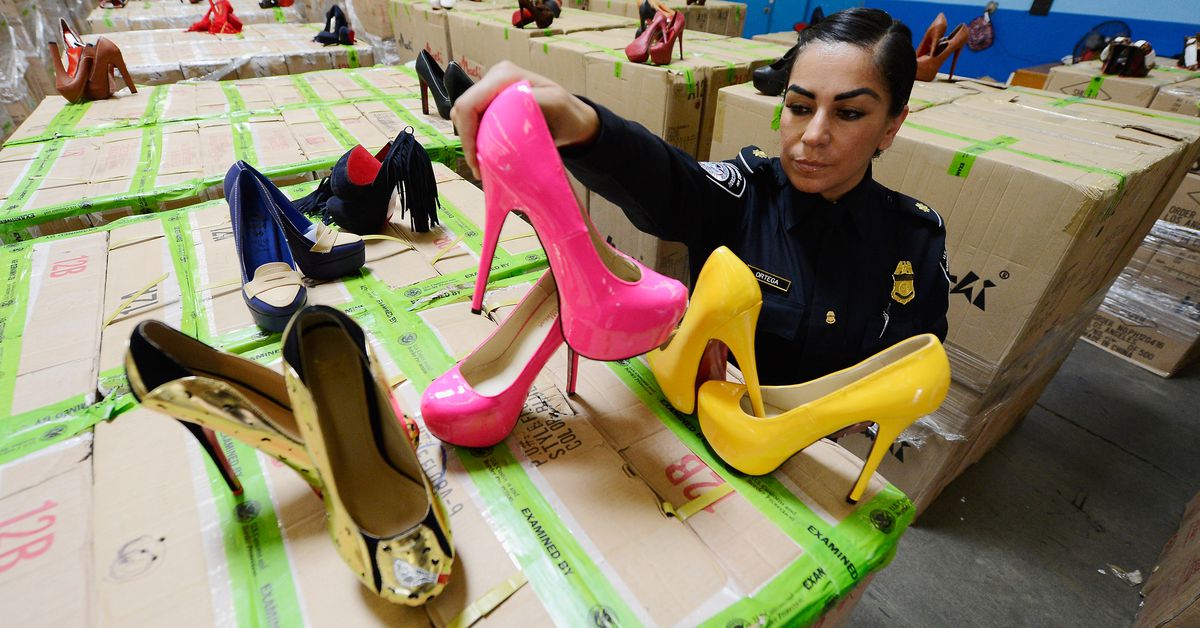Eonpass is the latest startup to try to find business applications for Web3 technology that can grow to real-world scale.
Galvanized by official backing from the European Union, its founder believes the company can succeed where others have failed, with open-source technology meaning anyone can join forces to stop the influx of counterfeit goods.
Distributed ledgers, which in principle offer an immutable record of provenance that can’t be altered, should be a good way to verify supply chains. But Eonpass’ leadership is well aware of the problems that have previously bedeviled the sector known as enterprise blockchain.
Eonpass has an advantage. In March, it won a competition run by the European Union’s intellectual property office, EUIPO. Alongside partners including consulting firm EY and freight forwarder Jet Air Service, Eonpass had the best model for using blockchain technology to detect fraudulent goods arriving at the border, according to EUIPO, a branch of the EU’s administration responsible for trademarks and similar issues.
That has put a spring in the step of Eonpass’ founder, Thomas Rossi.
“As a startup I have to be optimistic,” Rossi told CoinDesk in an online interview. “I took a lot of time to study why previous enterprise blockchains – I don’t want to say they failed, but they didn’t scale.”
EUIPO’s interest is clear: Counterfeiting costs.
A 2019 study by consultants at the Boston Consulting Group (BCG) put the global price tag of fake pharmaceuticals at between $75 billion and $200 billion, with phony electronic parts costing a further $100 billion. EUIPO itself says 6.8% of the EU’s imports from the rest of the world are fake, corresponding to around $134 billion per year. Plus there’s the nonfinancial cost of having unsafe drugs or children’s toys on the market.
Fighting this isn’t easy. Customs officers the world over have a stark choice of whether to trust easily forged paperwork or force individual pallets open to check. Banks stake significant volumes of trade finance on the outcome.
Opaque
Trade in conventional goods – like prescription drugs or electronics – “is a very opaque industry and there is no way to link one shipment to the originating brand owner that approves the content of the shipment and this destination,” Rossi said.
More innovative assets like non-fungible tokens, blockchain-powered assets which are supposedly used to prove an item’s ownership and authenticity, can still be faked: he cites the appearance of knock-off Hermès NFTs on OpenSea, and compares NFT platforms to a Wild West free of intellectual property rights.
Rossi – like BCG – believes blockchain can help, providing customs officers with an unfakeable attestation. While IBM’s product runs on the company’s own blockchain and cloud, Rossi’s will be adaptable enough to work with brands who might already have opted to use Ethereum rather than an alternative blockchain such as Polygon, he said.
“The most important function of blockchains is that they create a shared clock,” Rossi said. “So you cannot cheat on the chronological order of events.”
Existing blockchain products – he cites TradeLens, an initiative of computer giant IBM and shipping company Maersk – might have worked well for a small handful of well-resourced big businesses, but not for what he calls the “long tail” of numerous, smaller subcontractors.
IBM’s initiative is “not really open source, so there is no way to spin up a node and connect to a network,” Rossi said. “Maybe inside their closed system, everything works fine … but leaving the system or letting someone else from another system come in – that part is extremely difficult.”
Contacted by CoinDesk, a spokesperson for IBM said that TradeLens is “built on open standards” and “enables supply chain participants to securely and transparently share data with one another.”
The initiative has over 1000 organizations taking part and has already been used to transact over 5,500 electronic bills of lading, the legal documents used as receipts in international shipping, IBM said. The spokesperson cited the involvement of ports, authorities in six continents, and customs authorities in 16 countries, adding that TradeLens is “a neutral solution”, and that its platform can accept data from ocean carriers whether or not they are members.
Read more: IBM and Maersk Struggle to Sign Partners to Shipping Blockchain
Closed, proprietary systems have their advantages, notably allowing a tighter grip on revenues to recoup investment. Yet, grabbing even a sliver of the $10 trillion spent on global trade would be worthwhile. Rossi has a plan for that, too.
Early on, Rossi reckons he can make money by consulting for big business clients; later, by offering efficient data services for trade financers. He wants to move up from the three companies already testing to 10 by the end of next year, and 100 within a couple of years.
“I’ve already spoken with a couple of banks here in Italy. They’re really looking forward to having some more efficient way to handle the decisions that they make about the financing of value shipments,” he said. “The monetization comes after the network is as large as possible.”
Unlikely evangelist
Support from the EUIPO is helpful, Rossi says, not least for making potential luxury brand clients sit up and take notice. And the EU agency remains an evangelist for a system it thinks could help overworked border guards.
“Given the limited resources of enforcement officers, technologies such as blockchain could prove to be game-changing tools in the fight against trade in counterfeit products,” a spokesperson for the EUIPO told CoinDesk in a written interview. “Globally stakeholders are using various systems, which when operating are often disjointed, and this isolation is used by criminal networks to their advantage.”
Results of the proof of concept for Eonpass’ model will be presented early next year, with a basic product publicly available by the end of 2023, EUIPO says. The EU agency itself is creating a database to match brands to public keys, so customs agents can check declarations signed on the blockchain are valid. It’s also working with U.S. counterparts, and presented a paper to the World Intellectual Property Organization earlier in September.
The vision is an infrastructure “where any interested party (producers, consumers, transport services, etc.) can easily check the authenticity of a product and alert right-holders when an infringing product is detected,” said a leaked version of the paper, whose authenticity EUIPO has since confirmed.
All will be watching to see if, with EU backing, business-focused blockchain ideas can actually thrive in the wild.
Read more: Money Reimagined: Enterprise Blockchain Isn’t Dead







